How we collect set-top boxes
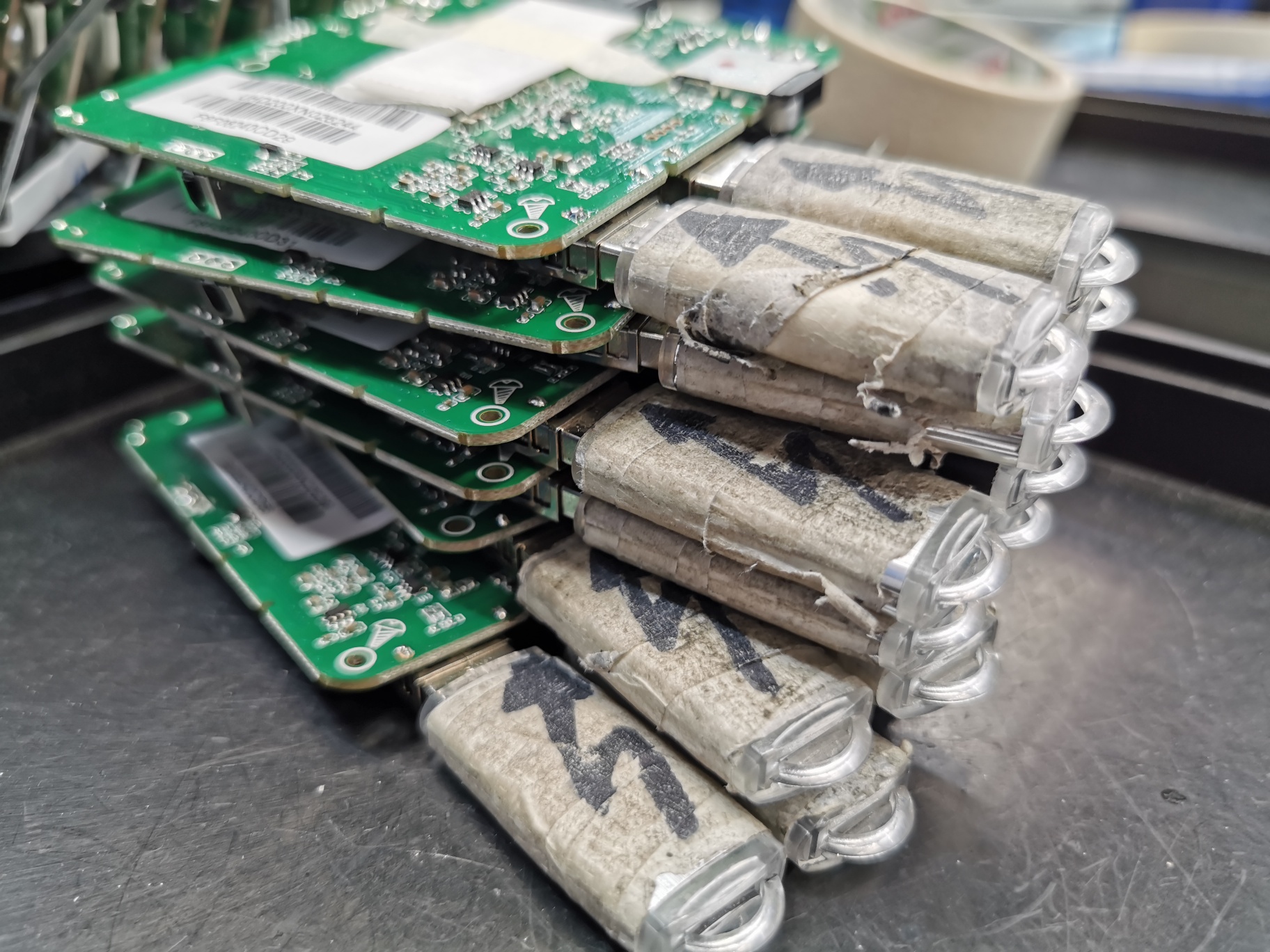
How to take a step towards such a fashionable concept today as import substitution? In fact, it is not difficult if you already have relevant experience in the development and production of a domestic product. We have this experience. For more than a year in Ekaterinburg there is an assembly production of set-top boxes.
The year was 2018, when, after weighing all the pros and cons, we began work on a business plan for the future production of set-top boxes and tightly engaged in preparing the premises for the assembly shop. Prior to this, the full cycle of hardware production was deployed at the plant of our partners in China, and software development and circuit engineering work was carried out within the walls of the NAG company.
Before we continue the story, we will focus on what the production process is, which we were to master. At first glance, it may seem that the assembly of such a seemingly simple and compact device should not present any particular difficulties.
')

It would seem: what is there? The case, the board and a few "buns" on it, and then, most importantly, carefully put everything in a box, "dilute" with components and send it to a happy customer. But it turned out to be somewhat more complicated. And before starting work on the project, we decided to see how the assembly process was set up by our colleagues in China.
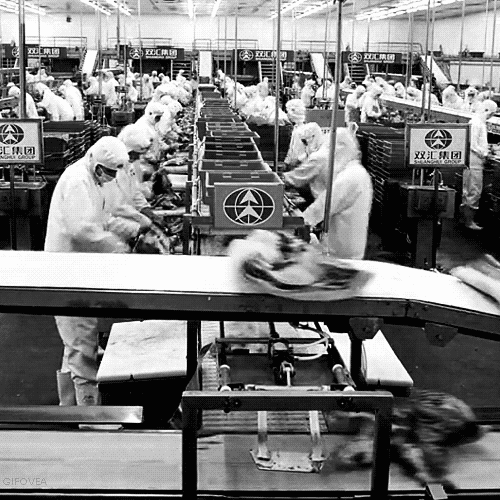
To assemble one Vermax attachment, it is necessary to assemble together 27 elements in a certain and strict sequence, since even some small structural parts of the device consist of several smaller ones. In China, each such operation is performed by one person and the whole of this “conveyor machine”, from human hands, quite successfully does the work. Unfortunately (or fortunately), we could not afford such a large amount of human resources, and the area of our workshop was insufficient to accommodate such a large number of employees. Therefore, we had to make great efforts before assembling the assembly line in accordance with our requests and capabilities. Some processes had to be automated and optimized so that one person could perform several assembly operations. But more about that later, because before you start collecting, you need to prepare the room.
The room
The main criteria when choosing a room for the assembly line were its proximity to the head office of the company and a capacity sufficient to accommodate the production. Initially, we chose another building next to our huge warehouse, and we were ready to demolish the partitions, but then a better idea appeared. Fortunately, on the floor of the business center where our office is located in Yekaterinburg, part of the premises was free. The case remained for the "small" - repair and technical equipment in order to turn the four concrete walls into a real shop with protection from static electricity.
When the room was finally ready, we purchased all the necessary equipment and approved the layout of it. It turned out like this:
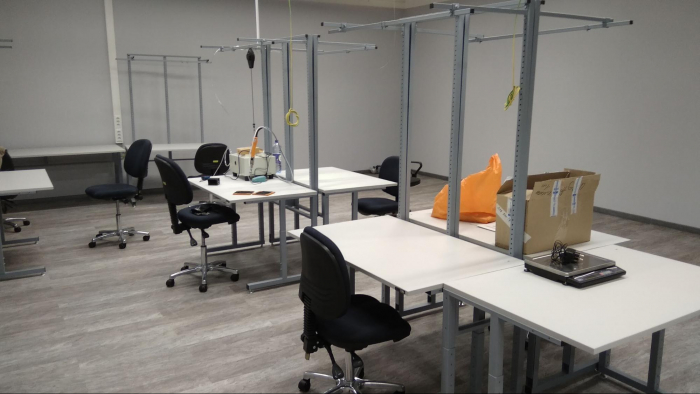
Later it was decided to somewhat change the assembly steps and methods for transferring operations. This allowed us to significantly save space. Now, in the room where the line was originally located, two can be accommodated. This opens up prospects for us to scale production as needed without opening a second workshop, although sooner or later we will have to go for it.
Production stages
In production, each person is assigned to a specific post on which specific assembly operations are performed. Each post is numbered, so let's start, as usual from Post number 1.
For production from the SMT line, the boards come in boxes of two hundred pieces. Each board is packaged in a separate package.
At the first post, the boards are visually inspected for damage, and the number of pieces in the document box is checked. A note is made in the internal accounting journal, where the serial number and the article of the box are entered. After that, the boards are unpacked and a radiator is attached to them using heat-conducting glue.

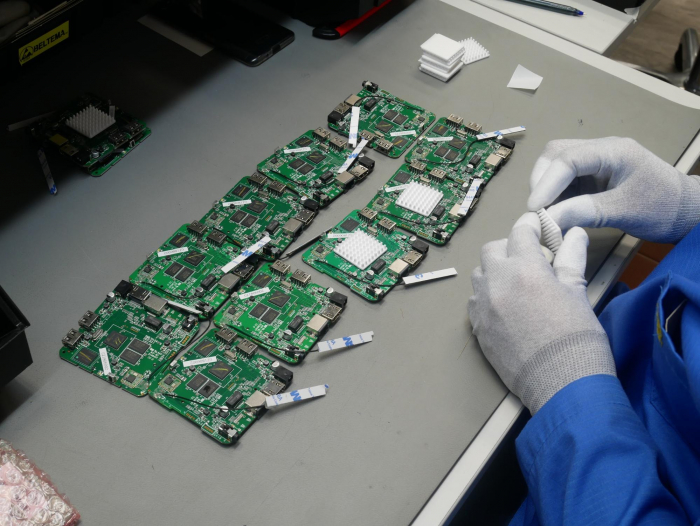
Further, the future set-top box will go to check on Post # 2, but before that two USB drives and a flash card are inserted into it.
Post two is one of the most important parts of the assembly. Here fees are rejected, which could be damaged by the transportation process. Marriage can be different: from poor-quality propayka to minor damage. And here it is worth noting that this is the second test. The first is carried out directly at the factory before shipping, and the second after thousands of kilometers of shaking.
By the way, some defects can detect a special magnifying glass:

The first step is to check the performance of all ports (for which we need the very USB-drives and "flash drive"). At the same stage, if necessary, the device is flashed.
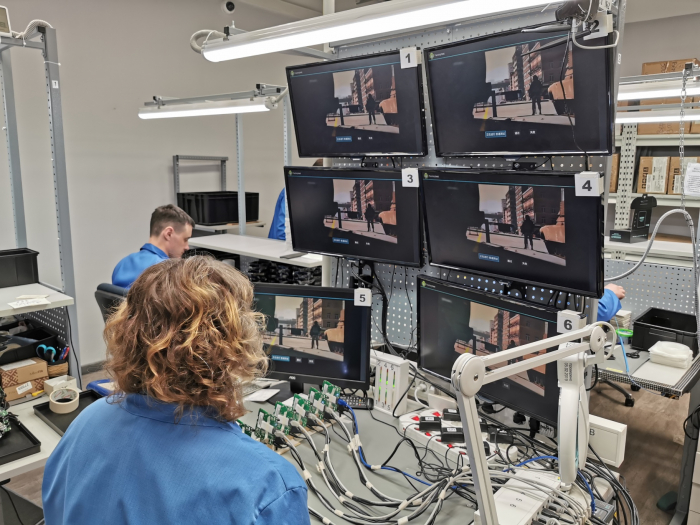
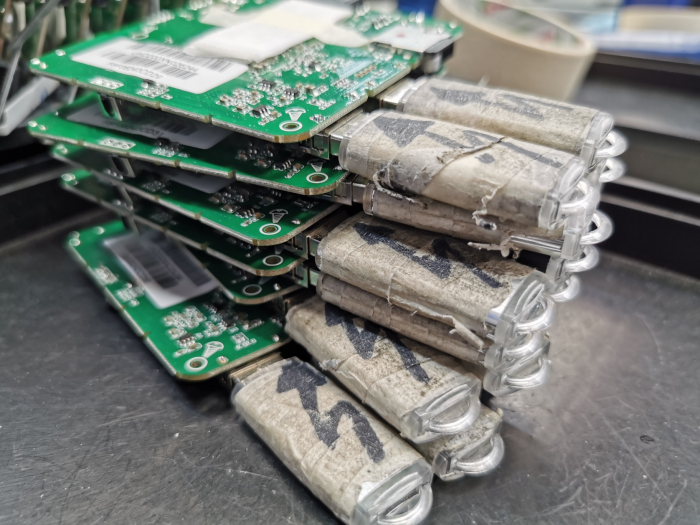
For the test, six boards are connected simultaneously. There is a test of the functionality of all functions of the console, such as sound, video, wi-fi, ethernet, bluetooth, overall performance, work with a remote control, etc. We check the sound using a special device with visual indicators of our own development.
Separately, it is worth noting that most of the tests are carried out automatically - partly using the software built into the console, partly - using external devices, for example, again our ERD controller.

Further, serviceable boards are transferred to Post No. 3, where the body is partially assembled, and antennas are mounted and light barriers are glued in. The light barrier is the very element due to which the console does not dazzle the user at night with a bright LED, but only shines with a small dot of light. For the same reason, by the way, there are no diagnostic diodes on the network interface card, and the diagnostics itself is made into the interface. Therefore, the prefix does not work as a nightlight and does not prevent the user to enjoy watching movies and sleep in the evening.
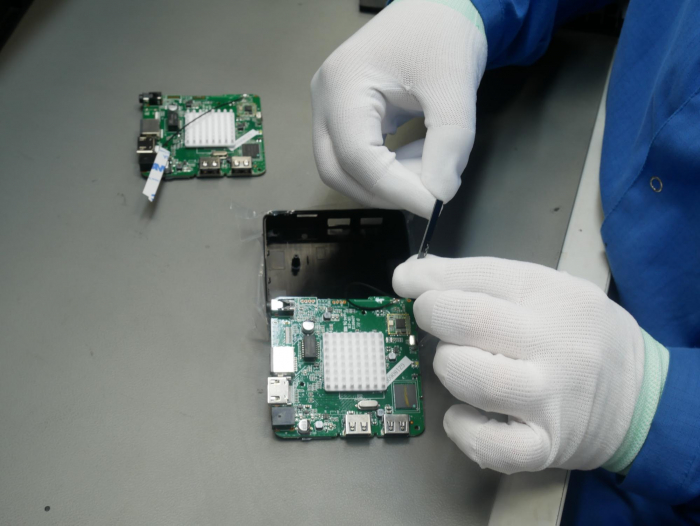
The half-assembled prefix continues its movement and moves to Post # 4. This is probably the most technologically equipped assembly stage. A pneumatic electric screwdriver is installed here, with which the board is screwed to the top cover.


The screwdriver feeds the screws automatically immediately after the previous screwing is completed. In order to avoid breakdowns and twists, on the screwdriver exhibited the force with which the screws will be screwed. This saves the very seconds that allowed us to reduce the number of people on the assembly line.
Then the assembler snaps the base of the case, and now the console can be considered almost assembled. But here there is a nuance. It is important that when it clicks into place, the access button to the service menu coincides with the latch of the cover. Trifle, and if necessary service work will be unpleasant.

The case is assembled and it remains only to stick rubber feet. By the way, an interesting story is connected with them, which once again underlines the advantage of its own assembly. One of our major customers asked to replace the rubber feet of the console with those that would not stain the surface of white furniture. We fulfilled the request as soon as possible and the new batch of consoles no longer left black marks. If this request had to be transmitted to a factory in China, its settlement would take months.
In the next post, the prefix fits into the box, and with it the components that are needed by a specific client. This is one of the advantages of our customization. For example, a client conducts his business in the eastern city of Russia, where until now the population has a large number of old televisions. “Tulips” (RCA ports) are relevant for them. So, the consoles will be equipped with "tulips". In general, the set of accessories is standard: a remote control, batteries, a power supply unit and an HDMI cable, the set-top box itself, the operating manual, and further on in the customer’s list.
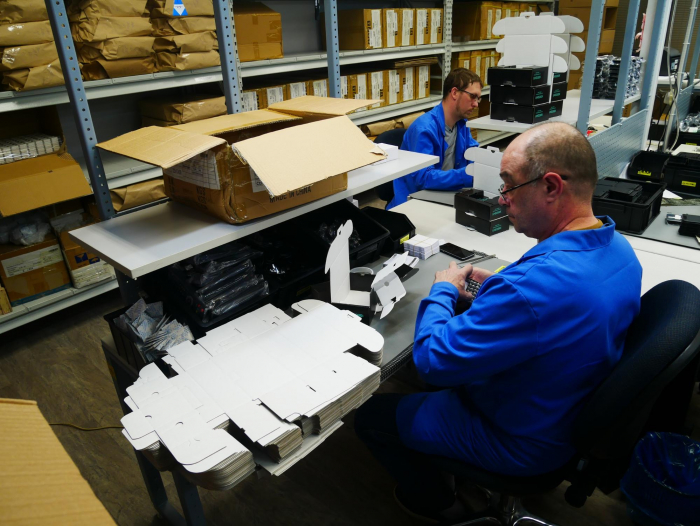


In the next step, the prefix fits into the box. The shipping film is removed, and the end of the attachment is replaced with a protective film instead.
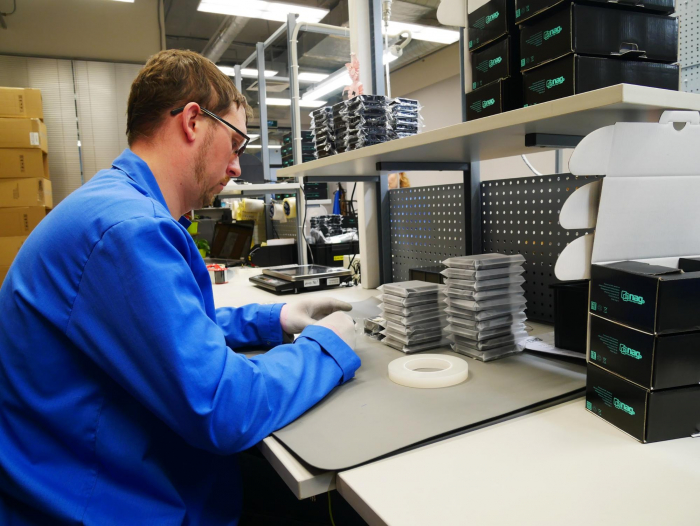



The whole thing is packaged in a bag and placed in a box on which an individual bar code is pasted.

After marking all boxes are weighed. Weighing is necessary to control the availability of all components in the box. If the difference in weight from the standard values will be significant, then the collectors have to open the boxes and pass on the control.
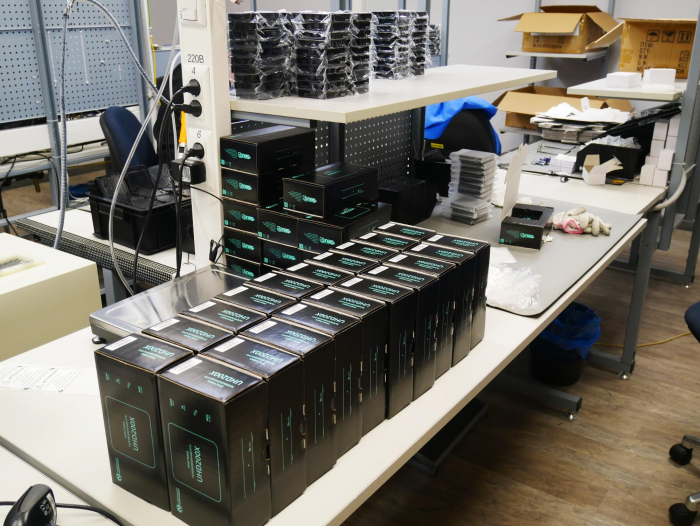

After that, each number is entered into the database and the computer generates a box barcode. It is in this box that the supplier will be transported by twenty consoles already assembled and fully equipped.


Well, then, it's simple. A certain number of consoles are sent straight from the boxes to manual unpacking and control, and some of them are sent to the heating cabinet of our own production in order to be sure of the reliability of the assembled device.
Why do we need these "troubles"?
Actually, why do we need all these efforts with our own assembly? Why hire employees and invest if hundreds of hands somewhere in faraway China are ready to do this job?

The most important advantage that we have gained by opening our own shop is shortening the customization time, which is undoubtedly very important for large telecom operators. The production time of the average batch of consoles in China is 3-4 weeks. For a relatively inexpensive delivery takes 1 - 2.5 months. Assembly production allowed us to reduce these periods to one week. Also, we began to produce our own boxes, significantly reducing the cost of construction and making it less time consuming.
Historically, NAG worked with a huge number of small operators, so we, among other things, focus on these companies. There are hundreds of providers in Russia whose requirements for consoles do not exceed two thousand per year. As a rule, such companies cannot afford to immediately pay for large quantities of equipment, which means that they actually have no opportunity to customize the hardware for themselves, since it is simply unprofitable for the manufacturer. For such companies, we have already developed a special offer that will allow us to solve their need for set-top boxes and get a customized solution.
Perspectives
Already, the number of consoles collected per day varies from 600 to 720 pieces. In the near future plans to increase the number of assembly posts in order to reduce the time spent on some operations. This will allow us to significantly increase the volume of devices collected per day. During the day we can already cover the requirements for operator boxes during the day.
Source: https://habr.com/ru/post/456354/
All Articles